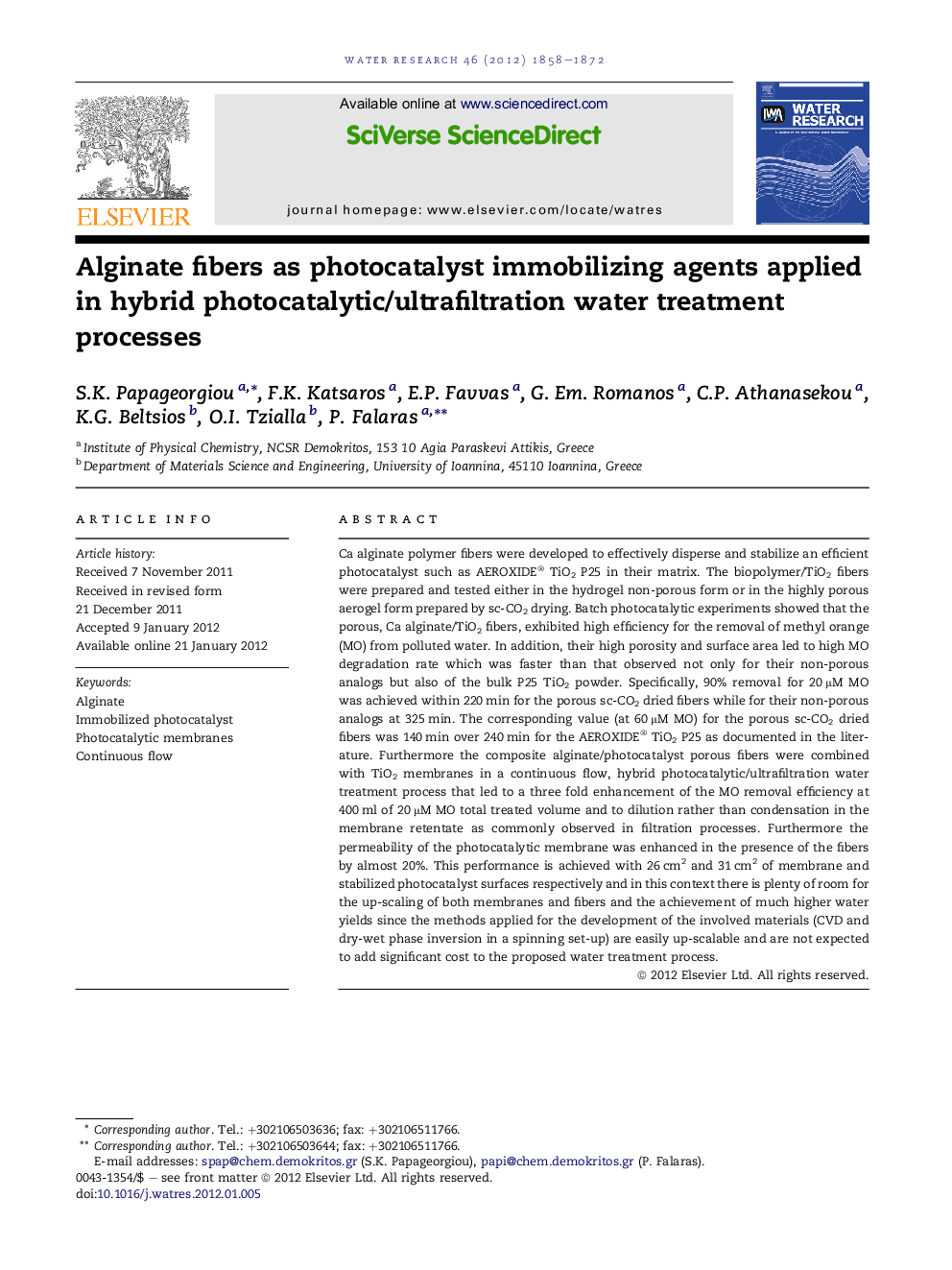| کد مقاله | کد نشریه | سال انتشار | مقاله انگلیسی | نسخه تمام متن |
|---|---|---|---|---|
| 4483484 | 1316889 | 2012 | 15 صفحه PDF | دانلود رایگان |

Ca alginate polymer fibers were developed to effectively disperse and stabilize an efficient photocatalyst such as AEROXIDE® TiO2 P25 in their matrix. The biopolymer/TiO2 fibers were prepared and tested either in the hydrogel non-porous form or in the highly porous aerogel form prepared by sc-CO2 drying. Batch photocatalytic experiments showed that the porous, Ca alginate/TiO2 fibers, exhibited high efficiency for the removal of methyl orange (MO) from polluted water. In addition, their high porosity and surface area led to high MO degradation rate which was faster than that observed not only for their non-porous analogs but also of the bulk P25 TiO2 powder. Specifically, 90% removal for 20 μM MO was achieved within 220 min for the porous sc-CO2 dried fibers while for their non-porous analogs at 325 min. The corresponding value (at 60 μM MO) for the porous sc-CO2 dried fibers was 140 min over 240 min for the AEROXIDE® TiO2 P25 as documented in the literature. Furthermore the composite alginate/photocatalyst porous fibers were combined with TiO2 membranes in a continuous flow, hybrid photocatalytic/ultrafiltration water treatment process that led to a three fold enhancement of the MO removal efficiency at 400 ml of 20 μM MO total treated volume and to dilution rather than condensation in the membrane retentate as commonly observed in filtration processes. Furthermore the permeability of the photocatalytic membrane was enhanced in the presence of the fibers by almost 20%. This performance is achieved with 26 cm2 and 31 cm2 of membrane and stabilized photocatalyst surfaces respectively and in this context there is plenty of room for the up-scaling of both membranes and fibers and the achievement of much higher water yields since the methods applied for the development of the involved materials (CVD and dry-wet phase inversion in a spinning set-up) are easily up-scalable and are not expected to add significant cost to the proposed water treatment process.
Figure optionsDownload high-quality image (403 K)Download as PowerPoint slideHighlights
► TiO2 photocatalysts effectively dispersed into Ca alginate porous hollow fibers.
► Methyl orange photodegradation rate higher than the TiO2 powder.
► Hybrid photocatalytic/ultrafiltration process is proposed.
► Three fold MO removal enhancement – 84% lower condensation factors achieved.
► Easy up-scaling of both membranes and fibers for much higher water yields.
Journal: Water Research - Volume 46, Issue 6, 15 April 2012, Pages 1858–1872